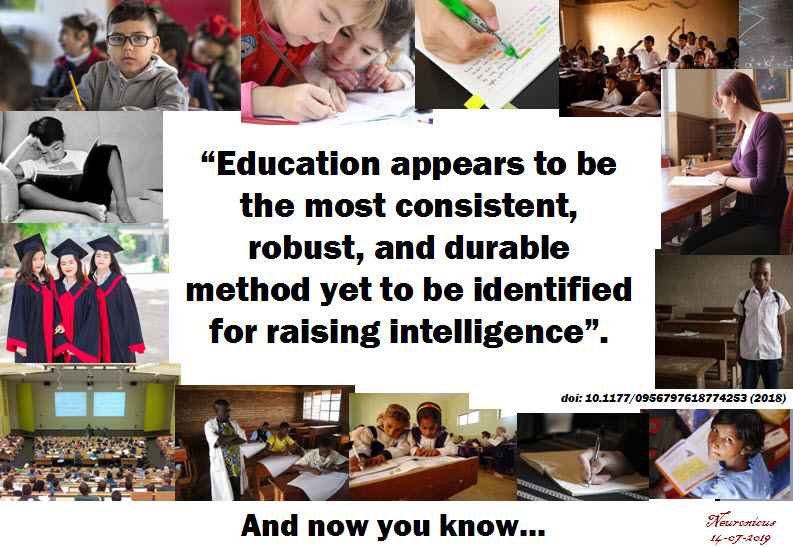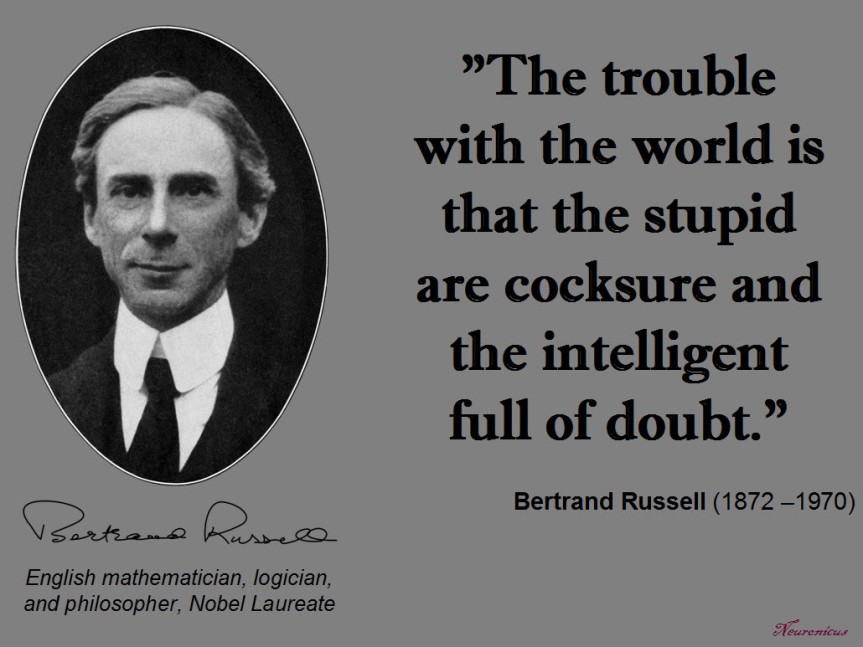Intelligence is a dubious concept in psychology and biology because it is difficult to define. In any science, something has a workable definition when it is described by unique testable operations or observations. But “intelligence” had eluded that workable definition, having gone through multiple transformations in the past hundred years or so, perhaps more than any other psychological construct (except “mind”). Despite Binet’s first claim more than a century ago that there is such a thing as IQ and he has a way to test for it, many psychologists and, to a lesser extent, neuroscientists are still trying to figure out what it is. Neuroscientists to a lesser extent because once the field as a whole could not agree upon a good definition, it moved on to the things that they can agree upon, i.e. executive functions.
Of course, I generalize trends to entire disciplines and I shouldn’t; not all psychology has a problem with operationalizations and replicability, just as not all neuroscientists are paragons of clarity and good science. In fact, the intelligence research seems to be rather vibrant, judging by the publications number. Who knows, maybe the psychologists have reached a consensus about what the thing is. I haven’t truly kept up with the IQ research, partly because I think the tests used for assessing it are flawed (therefore you don’t know what exactly you are measuring) and tailored for a small segment of the population (Western society, culturally embedded, English language conceptualizations etc.) and partly because the circularity of definitions (e.g. How do I know you are highly intelligent? You scored well at IQ tests. What is IQ? What the IQ tests measure).
But the final nail in the coffin of intelligence research for me was a very popular definition of Legg & Hutter in 2007: intelligence is “the ability to achieve goals”. So the poor, sick, and unlucky are just dumb? I find this definition incredibly insulting to the sheer diversity within the human species. Also, this definition is blatantly discriminatory, particularly towards the poor, whose lack of options, access to good education or to a plain healthy meal puts a serious brake on goal achievement. Alternately, there are people who want for nothing, having been born in opulence and fame but whose intellectual prowess seems to be lacking, to put it mildly, and owe their “goal achievement” to an accident of birth or circumstance. The fact that this definition is so accepted for human research soured me on the entire field. But I’m hopeful that the researchers will abandon this definition more suited for computer programs than for human beings; after all, paradigmatic shifts happen all the time.
In contrast, executive functions are more clearly defined. The one I like the most is that given by Banich (2009): “the set of abilities required to effortfully guide behavior toward a goal”. Not to achieve a goal, but to work toward a goal. With effort. Big difference.
So what are those abilities? As I said in the previous post, there are three core executive functions: inhibition/control (both behavioral and cognitive), working memory (the ability to temporarily hold information active), and cognitive flexibility (the ability to think about and switch between two different concepts simultaneously). From these three core executive functions, higher-order executive functions are built, such as reasoning (critical thinking), problem solving (decision-making) and planning.
Now I might have left you with the impression that intelligence = executive functioning and that wouldn’t be true. There is a clear correspondence between executive functioning and intelligence, but it is not a perfect correspondence and many a paper (and a book or two) have been written to parse out what is which. For me, the most compelling argument that executive functions and whatever it is that the IQ tests measure are at least partly distinct is that brain lesions that affect one may not affect the other. It is beyond the scope of this blogpost to analyze the differences and similarities between intelligence and executive functions. But to clear up just a bit of the confusion I will say this broad statement: executive functions are the foundation of intelligence.
There is another qualm I have with the psychological research into intelligence: a big number of psychologists believe intelligence is a fixed value. In other words, you are born with a certain amount of it and that’s it. It may vary a bit, depending on your life experiences, either increasing or decreasing the IQ, but by and large you’re in the same ball-park number. In contrast, most neuroscientists believe all executive functions can be drastically improved with training. All of them.
After this much semi-coherent rambling, here is the actual crux of the post: intelligence can be trained too. Or I should say the IQ can be raised with training. Ritchie & Tucker-Drob (2018) performed a meta-analysis looking at over 600,000 healthy participants’ IQ and their education. They confirmed a previously known observation that people who score higher at IQ tests complete more years of education. But why? Is it because highly intelligent people like to learn or because longer education increases IQ? After carefully and statistically analyzing 42 studies on the subject, the authors conclude that the more educated you are, the more intelligent you become. How much more? About 1 to 5 IQ points per 1 additional year of education, to be precise. Moreover, this effect persists for a lifetime; the gain in intelligence does not diminish with the passage of time or after exiting school.
This is a good paper, its conclusions are statistically robust and consistent. Anybody can check it out as this article is an open access paper, meaning that not only the text but its entire raw data, methods, everything about it is free for everybody.

For me, the conclusion is inescapable: if you think that we, as a society, or you, as an individual, would benefit from having more intelligent people around you, then you should support free access to good education. Not exactly where you thought I was going with this, eh ;)?
REFERENCE: Ritchie SJ & Tucker-Drob EM. (Aug, 2018, Epub 18 Jun 2018). How Much Does Education Improve Intelligence? A Meta-Analysis. Psychological Science, 29(8):1358-1369. PMID: 29911926, PMCID: PMC6088505, DOI: 10.1177/0956797618774253. ARTICLE | FREE FULLTEXT PDF | SUPPLEMENTAL DATA | Data, codebooks, scripts (Mplus and R), outputs
Nota bene: I’d been asked what that “1 additional year” of education means. Is it with every year of education you gain up to 5 IQ points? No, not quite. Assuming I started as normal IQ, then I’d be… 26 years of education (not counting postdoc) multiplied by let’s say 3 IQ points, makes me 178. Not bad, not bad at all. :))). No, what the authors mean is that they had access to, among other datasets, a huge cohort dataset from Norway from the moment when they increased the compulsory education by 2 years. So the researchers could look at the IQ tests of the people before and after the policy change, which were administered to all males at the same age when they entered compulsory military service. They saw the increase in 1 to 5 IQ points per each extra 1 year of education.
By Neuronicus, 14 July 2019














